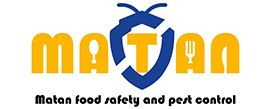Hazards Analysis & Critical Control Points

The HACCP process significantly reduces safety hazards in food by identifying and controlling potential biological, chemical or physical hazards. Though specific to food, HACCP systems vary depending on their application environment (production, handling, preparation, processing) and the nature dynamics of the particular organization.
HACCP comprises a 12-step process;
- Assemble the HACCP team
- Describe the product
- Identify the intended use of the product
- Construct a flow diagram
- Confirm the flow diagram on site
- Conduct a hazard analysis and consider control measures
- Determine critical control points (CCPs)
- Establish critical limits for each CCP
- Establish monitoring procedures for each CCP
- Establish corrective actions IF critical limits are not met
- Establish verification process
- Establish documentation and record keeping
Steps 6 -12 are known as the seven principles of HACCP
This course will help you:
- Understand how HACCP protocols enable establishments in the food industry handle, prepare and process food with minimal risks to safety hazards
- Familiarise participants with HACCP terms and the importance of food safety and food hygiene
- Develop and implement HACCP plans based on their specific work environments and HACCP principles
- Identify and effectively control food safety related hazards in your organisation
HACCP Courses:
- Foundation Certificate in HACPP (level 2)
- Intermediate Certificate in HACCP (level 3)
